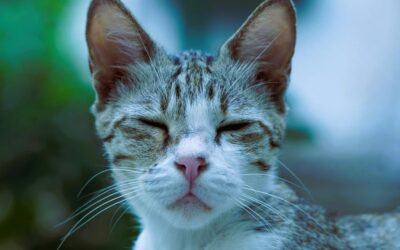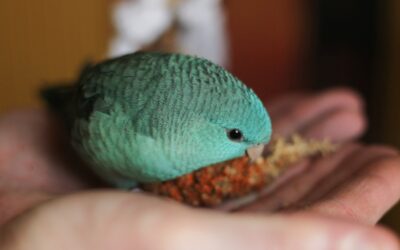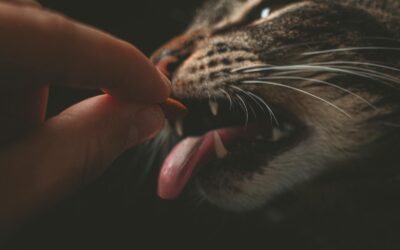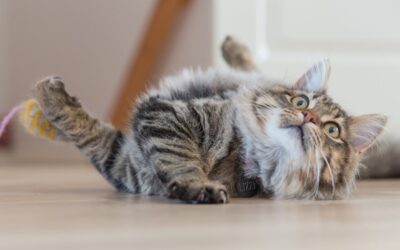Animals are one of the most fascinating creatures in the world. They come in different shapes, sizes, and colors. But no matter what type of animal it is, one thing is certain – they all love to be petted! Whether it’s a dog, cat, or even a rabbit, we’ve all seen how they can’t seem to get enough of our affection. But why do animals like being pet so much? In this blog post, we’ll explore the science behind this adorable phenomenon and why it’s good for our furry friends.
To understand why animals love being petted, we need to look at the science behind it. When we pet an animal, it releases feel-good hormones such as oxytocin in both the pet and the human. Oxytocin is associated with feelings of love and bonding, making it a chemical that is important in social relationships. So, when we pet an animal, we are releasing oxytocin in both of us, which creates a bond and reinforces our relationship with the animal.

Another reason why animals love being petted is that it provides them with comfort and security. Just like humans, animals can get stressed out, anxious, or frightened, and petting them can help to alleviate their stress. It’s a calming experience for them with gentle petting that offers a sense of security and care. When animals feel safe and secure, they are more likely to show their affection and trust towards us.
Some more science behind it is MrgprB4+ neurons are activated by the stroking of hairy skin and not by the poking or pinching. For analyzing the petting effects of this neuron on animals, researchers created a chemical that activates the MrgprB4+ and applied it to genetically engineered mice so that they can detect the reaction of mice after sensing the touch. One of the co-authors, David Anderson, explains that petting creates pleasurable feelings in some mammals as the nerve endings are attached to their hair follicles
Moreover, pets are social creatures and crave attention. They rely on their human companionship for comfort and companionship. Petting and cuddling are typically two ways of providing that attention and can be seen as a form of playfulness that pets enjoy. This is why we often see dogs nudge us to pet and cuddle them more often, with cats purring and pushing their heads into our hands as we pet them.
Contrary to popular belief, petting isn’t just for dogs and cats, but it can be for any animal, including rabbits, birds, and hamsters. Each animal species has its unique way of expressing affection, but they all have the same core need – to be petted and loved. Petting and caring for animals have also been linked to reducing stress in humans and improving their quality of life, making it a win-win for both pet and owner.
Domesticated animals like cats, dogs, horses, and rats like being pets for various neurological, psychological, or physiological reasons.

Petting Wild Animals: Is it Safe?
It’s no secret that people love animals of all kinds. From household pets to majestic wildlife, animals have an undeniable appeal. But many people take their love for animals too far and decide to pet or get too close to wild animals. Unfortunately, this can lead to dangerous and often fatal consequences.
Wild Animals are not Domesticated:
It’s essential to understand that wild animals are inherently unpredictable and hostile towards humans. That’s why they are called wild animals, not domesticated ones. Just like people, different animals have unique personalities and temperaments that are not trained for human interaction. An animal could be tolerant of one person and attack another. It’s difficult to determine which one you will experience, so it’s best to be cautious and avoid them.
Health Risks:
Many wild animals carry endemics and diseases that spread to humans and other human-made animals. For example, raccoons carry rabies, while deer tick, lyme disease. If you choose to pet a wild animal, you put yourself at risk of contracting any number of these diseases and passing them along to other pets or humans that you come into contact with afterward.
Wildlife Stress:
It’s easy to forget that wild animals experience stress when they come into contact with humans. Wild animals can lose their food and water sources when their habitat is disturbed. When someone pets or approaches wildlife for their entertainment, it only exacerbates their problem. Wild animals will become more stressed and anxious, and many will try to flee to find a new home or food supply. Stress-induced from captivity can lead to death or injuries.
Criminal Offence:
Some regions have laws and regulations prohibiting petting or getting too close to wildlife. They have been put in place for the safety of both wild animals and people. Violently harassing or killing a wild animal is a criminal offense in most countries and can lead to heavy fines, imprisonment, or even more severe punishment.
Expert Advice:
The most important thing to remember is that wild animals are not pets, and you should always keep your distance. Take photos from a distance and move away quickly to avoid any physical contact. If you cannot resist approaching a wild animal, it’s recommended that you reach out to wildlife experts in your area who can provide guidance and safety tips.
Even if you’ve had a positive experience in the past, it’s important to remember that animals are inherently unpredictable, and their actions can be dangerous. The best way to view wildlife is from a distance, to respect their space and health. Always look for professionals trained to handle wild animals and follow their advice closely. Wild animals deserve their place in the world, and we should respect that by looking after their well-being by maintaining a reasonable distance.

How To Know If Your Animals Enjoy Attention
Pets are lovely creatures that bring joy, laughter, and love into our lives. As pet owners, we often shower our furry friends with attention, whether it’s cuddling with them, playing with them, or giving them treats.
While we generally assume that our pets are enjoying the attention, how can we be sure? It’s essential to understand our pet’s behaviors, body language, and signals to determine whether you animals love petting or not.
Your pet is eager to interact:
The first sign that your pet is enjoying the attention is when they are eager to interact with you. They might wag their tail, purr, or jump up and down, excitedly barking or meowing. This eagerness to interact with you is a clear signal that your pet is happy and wants to spend time with you. If they exhibit such actions, it means that they are appreciative and enjoying your attention.
Your pet is relaxed and calm:
Another sign that your pet is enjoying your attention is if they are relaxed and calm. If your pet is lying down, content and looking peaceful, it means that they feel comfortable and secure in your presence. This is a clear indication that your pet is satisfied and content with the attention they have received from you.

Your pet initiates physical contact:
If your pet is rubbing their body up against you or nudging your hand, it is a sign that they’re enjoying the attention you’re giving them. This behavior generally means that they want more affection and are bonding with you. So always keep in mind that, if your pet initiates physical touch, they love it.
Your pet has a healthy appetite:
A healthy appetite in pets is indicative of their overall well-being. If your pet demonstrates an excellent appetite, showing a keen interest in food and eating well, it shows they are in good health and enjoying your attention. Moreover, if they’re eating in front of you, it’s a gesture of trust and bonding towards you.
Your pet falls asleep:
If your pet falls asleep while you’re spending time with them, it’s a telltale sign that they’re content, comfortable, and happy in your presence. It’s also worth noting the way your pet falls asleep – lying on their back with their belly exposed is the standard embodiment of trust and feeling safe. This posture indicates that your pet is completely relaxed around you.
Your pets are an essential part of your life, and it is crucial to their well-being and happiness that you understand their behavior and interpret their signals correctly. The above-mentioned signs such as your pet being relaxed, initiating physical contact, having a healthy appetite, falling asleep, and being eager to interact are all indications that most domestic animals enjoy your attention from young age to old age.
As pet owners, it’s essential that we pay attention to their behavior and provide them with the love and attention they need. Remember, animals can’t verbalize their emotions, so it’s up to us to interpret the signals they give us. Always observe your pet’s behavior, body language, and signals because the love and attention you give them today will create a happy, trusting, and long-lasting bond.

Kate’s K9 Pet Care
Kate’s K9 Pet Care is your go-to place for professional pet care! Whether you need assistance walking your pup or having your pet supplies delivered to your home, our team of experts are there to help.
Conclusion:
Overall, petting an animal is one of the most rewarding and bonding experiences we can have with our pets. Not only does it make them feel good and secure, but it also helps to establish a sense of trust and affection. So, the next time you’re cuddling up with your furry friend on the couch, remember that you’re not just giving them love and attention, but also creating a special bond that will last a lifetime.







